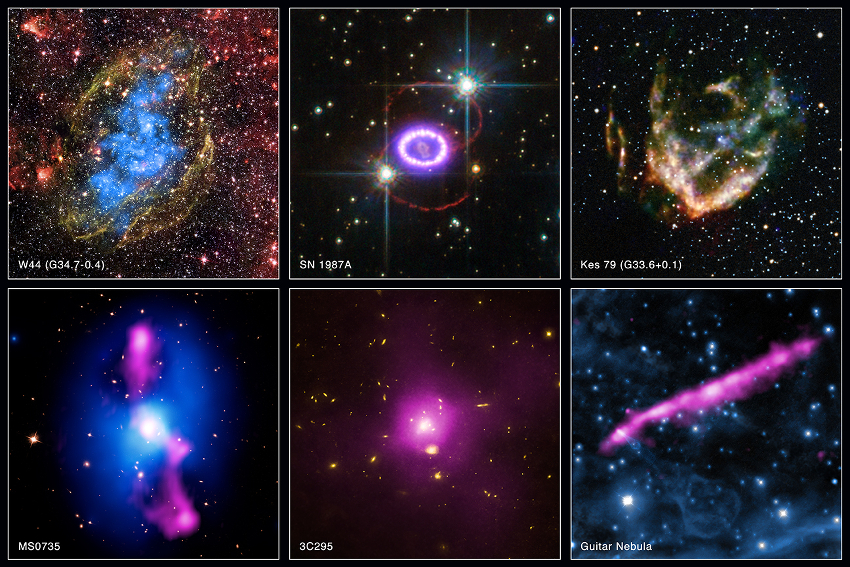
 Credit: NASA/CXC/SAO
Credit: NASA/CXC/SAO
Curation
Astronomical archives play a major role in scientific discovery. Archives store previously-obtained observations, but also provide tools to search and analyze these observations. Analysis of archived data allows scientists to search for the unexpected, or to tease out trends which are only apparent through careful analysis of large samples. Major missions like the Chandra and XMM-Newton X-ray observatories have science centers to expertly calibrate, process and store their observations. The images above are a selection of beautiful archived images obtained by the Chandra X-ray Observatory and published by the Chandra Data Archive. To protect and preserve high-energy X-ray and Gamma-ray observations by NASA satellites, in 1990 NASA established the High Energy Science Archive Research Center. The HEASARC provides centralized access to high-energy observations from space-based observatories. It not only maintains data from high-energy space observatories, but also provides analysis software and expertise in the interpretation of these data. The HEASARC allows astronomers to compare data from one space observatory with another, to examine the properties of stars, black holes, neutron stars, and galaxies, and other objects over a wide range of energies, and to determine how these objects change with time. Exploring archival data is not just for the professional, however. Tools like the SkyView virtual observatory let anyone explore the gold mine of modern archived astronomical data. Go make your own discoveries - come join the adventure!
Published: July 19, 2021
<
HEA Dictionary ● Archive
● Search HEAPOW
● Other Languages
● HEAPOW on Facebook
● Download all Images
● Education ● HEAD
>

Each week the HEASARC
brings you new, exciting and beautiful images from X-ray and Gamma ray
astronomy. Check back each week and be sure to check out the HEAPOW archive!
Page Author: Dr. Michael F. Corcoran
Last modified Monday, 26-Feb-2024 17:03:24 EST


